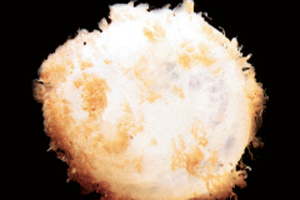The female and male reproductive systems were designed to create a new being. Although they are completely different, their joint action perpetuates the human species.
In this issue, we will analyze the complex female reproductive system, whose organs are mostly found in the pelvic cavity. It has an external, visible part called vulva, which is formed by a series of structures that have direct participation in sexual intercourse and protect the internal organs. The internal part is mainly composed of the ovaries, fallopian (uterine) tubes, uterus and vagina.
The tasks this system has to perform include receiving male sex cells (spermatozoa), provide an atmosphere fit for the encounter between the sperm and the ovum, as well as housing and protecting the embryo for the nine month gestation period. In addition, the system has two glands that secrete milk located on the thorax.
These glands provide healthy nutrition to the baby during their first months of life.
Ovaries
The ovaries are two small structures -two to three centimeters long- found in adult women. They are located in the pelvis, one on each side of the uterus, at the end of the fallopian (uterine) tubes, although they are not connected to them, because they are suspended within the pelvic cavity, bound to the tubes by a very thin ligament. Each ovary is covered by the epithelium. Inside, there are two different regions. The first one is called peripheral zone or cortex, where ova (female sex cells) are stored and matured; the second region is the medulla, which contains fibrous tissue, vessels and nerve cells.
Ovum
They are the largest human cells (0.13 millimeters). They don’t move on their own like sperms do (male cells). The nucleus of the ovum contains half of the genetic information needed to create a new being. It is covered by several layers; the main ones are the pellucid layer or zone (also known as zona pellucida, it protects the ovum and eases the union with male sex cells), the follicular cell layer (it forms the corona radiata, whose function is to wrap and protect the female germ cell) and the layer of cells that form the zona granulosa (in charge of protecting and wrapping the ovum).








